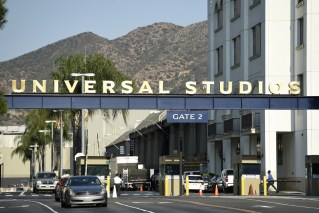Collapsed Miami building had ‘major structural damage’: Engineer

Mothers crying out for lost children, rescue crews combing tonnes of rubble and a 15-year-old boy pulled from the wreckage.
These scenes are the human toll of the Miami building collapse as it became almost certain that no more survivors would be found.
Early on Monday (Australian time), police confirmed more bodies were discovered when search teams started digging a 12-metre deep trench in the debris of what had been Champlain Towers South.
The official death toll stands at nine. Another 150 people are still missing – and authorities say they are still hopeful of finding more people alive.
Devastated residents and families have been dealt another blow as they wait for news of their loved ones: This disaster could have been avoided.
Boy rescued from the rubble of a building collapse in Surfside, Florida — near Miami Beach.
Hundreds of first responders are on the scene right now.
Rescue operation continues at 8777 Collins Ave. pic.twitter.com/Hnq7Gd9QW4— Brian Entin (@BrianEntin) June 24, 2021
On Friday night (local time), city officials provided documents that revealed an engineer had warned in October 2018 that he discovered “major structural damage” to a concrete slab below the pool deck in a section of the Champlain Towers South condominium building.
The engineer, Frank P Morabito, said in a structural survey report that waterproofing had failed below a pool deck and parking garage, which stopped water from draining off.
“The failed waterproofing is causing major structural damage to the concrete structural slab below these areas,” the report said.
“Failure to replace the waterproofing in the near future will cause the extent of the concrete deterioration to expand exponentially.”
The report did not warn of imminent danger from the damage, and it is unclear if any of the damage observed was responsible for the collapse.
It did note, however, the need for extensive and costly repairs to fix the systemic issues with the building.
What do we know about the collapsed Miami building?
About 1.30am on Thursday (local time), when many residents were fast asleep, a portion of Champlain Towers South, north of Miami Beach, suddenly collapsed.
In less than 30 seconds, 55 of the building’s 136 units were destroyed.

Damage caused by the partial collapse of the Champlain Towers, north of Miami. Photo: Getty
About 80 of those units were occupied by a mix of seasonal and permanent residents.
Despite early fears of missing Australians, the federal government said it was not aware of any Australians caught in the building.
Department of Foreign Affairs and Trade officials will continue to make urgent enquiries.
Nine people have been confirmed dead, but that number will rise as authorities work through debris.
Local Mayor Daniella Levine Cava said that rescuers began to dig a trench into the pile of debris.
They found more bodies and remains in the trench, which they will continue to use to bury deeper into the debris.

Photos of missing residents have been posted at a makeshift memorial at the site of the Miami building collapse in Surfside, Florida. Photo: Getty
Officials have so far identified four of the victims. They are Antonio Lozano, 83, and Gladys Lozano, 79; Manuel LaFont, 54; and Stacie Fang, 54.
Police said one of the victims had been pulled from the debris alive but later died in hospital.
What caused it?
Engineers have started investigating the cause of the collapse, but it’s too early to say yet.
Before the disaster, Champlain Towers South was already undergoing quality and safety inspections.
It passed a roof inspection on Wednesday, Surfside Vice Mayor Tina Paul told The Washington Post.
Kenneth Direktor, an attorney for the building’s condominium association, said the building also recently underwent a routine inspection, which is required once structures hit the 40-year mark.
The apartment development was built in 1981.
Mr Direktor said its findings were “fairly typical” for a building of its age, adding there were no obvious signs of threats to its structural integrity.
Did environmental factors play a role?
Surfside, the Miami suburb where the building collapsed, lies on a stretch of coastline adjacent to ‘Hurricane Alley’, an area of warm water in the Atlantic Ocean known for producing severe tropical storms.
The region’s inherent vulnerability is why Florida has some of the strictest building codes in the United States.
However, according to a report in the Miami Herald, most residential towers and family dwellings in Miami-Dade county were built before those building codes were upgraded in the early 1990s.
That’s more than 700,000 properties.

The wreckage of the partially collapsed building in Surfside on June 25. Photo: Getty
Some experts say the apartment’s close proximity to the beach may have also contributed to its collapse.
According to a 2020 research paper, the structure, which was built on reclaimed wetlands, has been sinking since the 1990s.
Florida professor Shimon Wdowinski, one of the paper’s authors, told CNN that researchers found the building had “some kind of unusual movement”.
He said such subsidence probably did not cause the collapse, but it could have been a contributing factor.
What does that mean for us in Australia?
The Miami building collapse should serve as an eye-opener to Australians, said Phil Dwyer, the head of small builder lobby group Builders Collective of Australia.
Although we don’t know the exact cause of the tragedy, Mr Dwyer conceded claims of cost-cutting by builders and greedy developers were common in the construction industry.
For that reason, he said a similar collapse could happen here, adding “building practices haven’t been very good in the last 25 years in Australia”.
“It all comes back to money,” he said.
“If a builder realises he has underquoted, he’s going to cut every corner known to man to save money.”
In 2019, a shocking study into the poor quality of apartment buildings found new blocks were “plagued with defects”, with at least one found in 85 per cent of all buildings analysed.
The report followed the emergency evacuation of residents in Mascot Towers in Sydney after cracks were discovered in the building.
In 2018, Sydney’s Opal Towers was evacuated on Christmas Eve and again three days later after a large crack was found on level 10.
The tower blocks are just a few examples of the apparent poor quality of some high-rise blocks in Australia.
“I don’t want to fearmonger, but we need more people to be alert,” Mr Dwyer said.
“None of this ‘She’ll be right’ attitude.”







